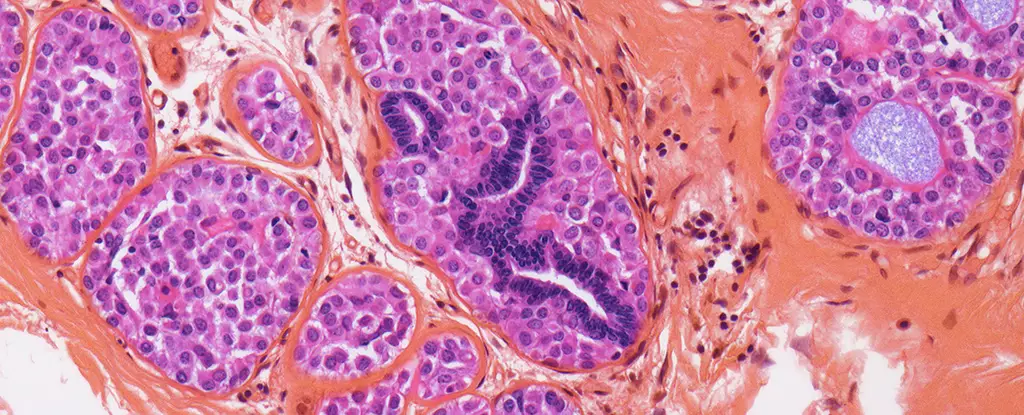Breast cancer survival rates have improved remarkably over recent decades, yet a shadow of uncertainty still looms. Even after successful treatment, approximately 30% of patients face the devastating return of their disease. These recurring tumors, often dormant and undetectable for years, are responsible for a significant number of fatalities, claiming around 685,000 lives globally each year. The persistent challenge has been to intercept these stealthy cancer cells before they gain momentum and threaten patient lives. Existing strategies, centered around vigilant monitoring, have proven inadequate because they address the problem reactively rather than proactively. The frustration is palpable—how do we eliminate a threat we cannot see and wait to find?
The breakthrough emerging from recent research promises to change this paradigm profoundly. By focusing on the biological roots of cancer relapse—dormant tumor cells (DTCs)—scientists aim to develop treatments that do more than monitor; they aim to prevent recurrence altogether. This approach, akin to hunting down and dismantling the enemy’s underground hideouts, could substantially increase long-term survival prospects for breast cancer patients.
Decoding Dormant Cells: The Key to Long-Term Remission
For years, the scientific community struggled to understand the biology of dormant tumor cells. These cells, which survive initial treatments, enter a state of arrested growth, evading many of the chemotherapies and targeted therapies designed to destroy active cancer. Recent breakthroughs have confirmed that these sleeping cells reside in places like the bone marrow and other tissues, ready to reignite disease at the slightest provocation.
What makes DTCs particularly insidious is their biological distinctiveness from active tumor cells. They are less proliferative, less accessible to conventional treatments, and capable of remaining inactive for years. This dormancy explains why many patients experience hidden setbacks long after seemingly successful therapy. The challenge, then, has been to find a way to identify and neutralize these cells before they can awaken and cause trouble.
The innovative approach proposed by researchers at the University of Pennsylvania targets these silent foes directly. The key lies in understanding their vulnerabilities—biological pathways and drug susceptibilities that traditional treatments overlook.
Targeted Therapies and Promising Results
The study’s results underscore the groundbreaking potential of this strategy. Utilizing a combination of existing drugs—hydroxychloroquine, known for autoimmune disease treatment, and everolimus, an established anti-cancer agent—the researchers observed impressive eradication rates of dormant cells. In a small but pivotal trial involving 51 women with previous breast cancer, up to 87% of DTCs were eliminated when the drugs were used together. Astonishingly, all patients who received the combined therapy remained cancer-free after three years, a statistic that could redefine the long-term management of breast cancer.
Notably, these findings were corroborated in preclinical models—mice engineered to simulate human disease. The animal studies allowed scientists to delve into the mechanisms at play, revealing that certain drugs, previously deemed ineffective against active cancers, show remarkable efficacy against dormant cells. This insight highlights an essential shift in understanding: the biology of sleeping cancer cells is fundamentally different from their active counterparts. Targeting their unique vulnerabilities offers a promising pathway to universal, durable remissions.
Some critics might question the reliance on existing drugs or the small size of the initial trials. While cautious skepticism is warranted, the data’s consistency across human and animal models signals a genuine breakthrough. This approach challenges the conventional wisdom that dormant cells are untouchable and signals a revolutionary move toward preemptive, rather than reactive, cancer care.
Implications and Future Horizons
The journey from these early successes to widespread clinical application is still unfolding. Larger, more diverse trials are essential to confirm safety, efficacy, and optimal dosing. However, the promise is undeniable: transforming our approach from one of vigilance and fear to one of proactive eradication.
If this strategy proves successful at scale, it could dramatically reduce rates of cancer recurrence, saving countless lives and alleviating the psychological burden borne by survivors. The ongoing development of drugs tailored to disrupt dormant cell pathways heralds a future where cancer is not just treatable but potentially curable in its earliest, hidden stages.
In the grand scheme, this research signifies a bold shift in oncology—addressing the disease at its roots rather than merely battling its outward manifestations. For patients and clinicians alike, it offers renewed hope that, in the not-too-distant future, cancer relapse may become a rarity rather than an unwelcome inevitability.


Leave a Reply